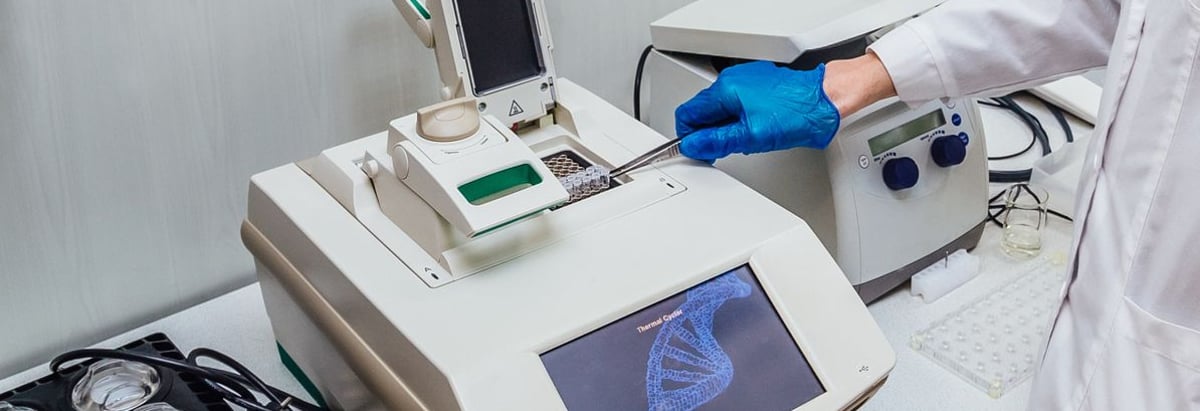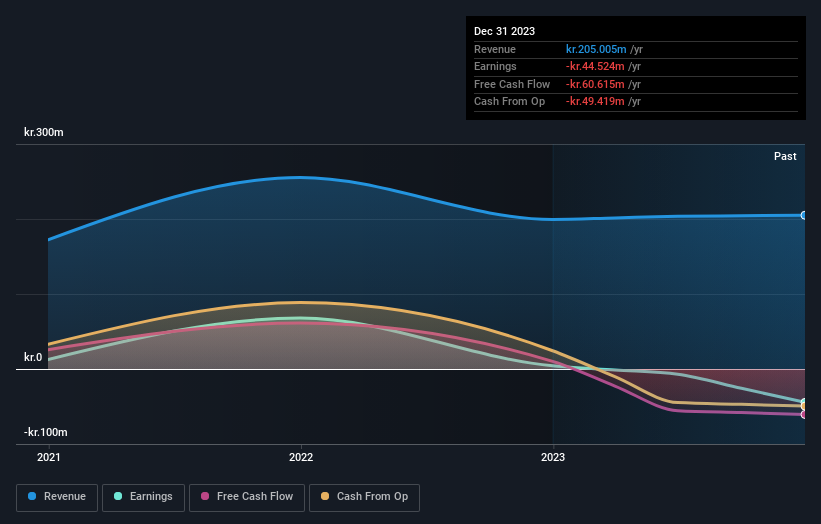- Denmark
- /
- Life Sciences
- /
- CPSE:GUBRA
Insiders remain on top despite recent sales, own 65% of Gubra A/S (CPH:GUBRA)

Key Insights
- Insiders appear to have a vested interest in Gubra's growth, as seen by their sizeable ownership
- The top 2 shareholders own 61% of the company
- Recent sales by insiders
If you want to know who really controls Gubra A/S (CPH:GUBRA), then you'll have to look at the makeup of its share registry. And the group that holds the biggest piece of the pie are individual insiders with 65% ownership. That is, the group stands to benefit the most if the stock rises (or lose the most if there is a downturn).
Despite recent sales, insiders own the most shares in the company. As a result, they stand to gain the most after the stock gained 4.0% in the past week.
In the chart below, we zoom in on the different ownership groups of Gubra.
Check out our latest analysis for Gubra

What Does The Institutional Ownership Tell Us About Gubra?
Institutional investors commonly compare their own returns to the returns of a commonly followed index. So they generally do consider buying larger companies that are included in the relevant benchmark index.
As you can see, institutional investors have a fair amount of stake in Gubra. This suggests some credibility amongst professional investors. But we can't rely on that fact alone since institutions make bad investments sometimes, just like everyone does. If multiple institutions change their view on a stock at the same time, you could see the share price drop fast. It's therefore worth looking at Gubra's earnings history below. Of course, the future is what really matters.

We note that hedge funds don't have a meaningful investment in Gubra. Because actions speak louder than words, we consider it a good sign when insiders own a significant stake in a company. In Gubra's case, its Top Key Executive, Jacob Jelsing, is the largest shareholder, holding 31% of shares outstanding. In comparison, the second and third largest shareholders hold about 31% and 8.9% of the stock. Additionally, the company's CEO Henrik Blou directly holds 2.8% of the total shares outstanding.
To make our study more interesting, we found that the top 2 shareholders have a majority ownership in the company, meaning that they are powerful enough to influence the decisions of the company.
Researching institutional ownership is a good way to gauge and filter a stock's expected performance. The same can be achieved by studying analyst sentiments. As far as we can tell there isn't analyst coverage of the company, so it is probably flying under the radar.
Insider Ownership Of Gubra
The definition of company insiders can be subjective and does vary between jurisdictions. Our data reflects individual insiders, capturing board members at the very least. Management ultimately answers to the board. However, it is not uncommon for managers to be executive board members, especially if they are a founder or the CEO.
Most consider insider ownership a positive because it can indicate the board is well aligned with other shareholders. However, on some occasions too much power is concentrated within this group.
It seems that insiders own more than half the Gubra A/S stock. This gives them a lot of power. Given it has a market cap of kr.10b, that means insiders have a whopping kr.6.6b worth of shares in their own names. Most would argue this is a positive, showing strong alignment with shareholders. You can click here to see if they have been selling down their stake.
General Public Ownership
With a 12% ownership, the general public, mostly comprising of individual investors, have some degree of sway over Gubra. This size of ownership, while considerable, may not be enough to change company policy if the decision is not in sync with other large shareholders.
Next Steps:
It's always worth thinking about the different groups who own shares in a company. But to understand Gubra better, we need to consider many other factors. For instance, we've identified 2 warning signs for Gubra (1 is potentially serious) that you should be aware of.
Of course this may not be the best stock to buy. So take a peek at this free free list of interesting companies.
NB: Figures in this article are calculated using data from the last twelve months, which refer to the 12-month period ending on the last date of the month the financial statement is dated. This may not be consistent with full year annual report figures.
New: Manage All Your Stock Portfolios in One Place
We've created the ultimate portfolio companion for stock investors, and it's free.
• Connect an unlimited number of Portfolios and see your total in one currency
• Be alerted to new Warning Signs or Risks via email or mobile
• Track the Fair Value of your stocks
Have feedback on this article? Concerned about the content? Get in touch with us directly. Alternatively, email editorial-team (at) simplywallst.com.
This article by Simply Wall St is general in nature. We provide commentary based on historical data and analyst forecasts only using an unbiased methodology and our articles are not intended to be financial advice. It does not constitute a recommendation to buy or sell any stock, and does not take account of your objectives, or your financial situation. We aim to bring you long-term focused analysis driven by fundamental data. Note that our analysis may not factor in the latest price-sensitive company announcements or qualitative material. Simply Wall St has no position in any stocks mentioned.
About CPSE:GUBRA
Gubra
Operates as a biotech company with two primary areas of business: pre-clinical contract research (CRO) services and proprietary early target and drug discovery programs in Denmark and internationally.
Flawless balance sheet very low.


